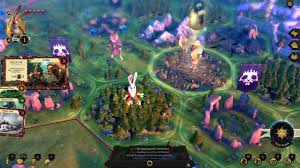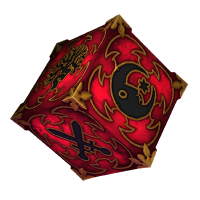Microtransactions are often seen as the bogle of the gaming world — a sometimes-necessary evil peculiar to our modern times. Some developers implement them in a fairly nonintrusive way, like we’ve seen in Bravely Default. But others practically require in-game purchases if you want to succeed (I’m looking at you, Fire Emblem Heroes).
So when League of Geeks chose to include microtransactions for their popular RPG boardgame Armello, it raised some eyebrows — especially considering the game’s low price point to begin with. Yet whether their existence in the game is a good or bad thing ultimately depends on the individual player’s choice.
Armello, for those of you unfamiliar with the game, pays homage to old-school tabletop games — combining a rich fantasy setting with RPG elements like equipping characters, sidequests, and dungeon exploration as you wage war for the kingdom. Success or failure are determined in large part by RNG, so even the best of strategies can easily go wrong if the circumstances are against you. As such, there is a definite element of “one-more-turn” at play.
Such a setup seems like a prime choice for adding in-game purchases that help arrange the game in your favor, either through extra dice rolls, powerups, or items, and it’s not a great leap from one more turn to just one more purchase. Yet that’s not really what happened here.

You don’t even have to pay to be a giant, sword-wielding rabbit!
What’s the Big Deal?
Purchasing the game by itself gives you access to loads of content anyway, with all the base characters — each of whom has their own unique abilities — and the chance to earn chests or keys to unlock chests after each multiplayer battle. Chests give you dice skins to customize your dice, but the results are purely aesthetic. It’s these skins and chests that are the focus of the microtransactions, with a huge array of dice skins available.
If you opt for the chests, it’s completely random what you’ll get — and some reviewers liken the setup to a form of gambling, encouraging players to try again to see what luck they’ll get. However, it’s difficult to see that being the case here, unless you really, really love having as many different looking dice as possible.
The naturally ostentatious nature of the purchases means there is a slight element of the haves versus the have-nots, since everyone is going to see who has what type of dice. At the same time, regardless of how much money you spend on these, your chances at victory are still determined by the RNG, and with the relatively low price point of the microtransactions themselves at $2.99, there is a chance that almost anyone could, at some point, pick at least one extra dice skin to flaunt.

This bit about price and desirability determines how microtransactions are received. The NPD group conducted a market survey in October of 2016 and found that 77% of gamers felt positively about in-game purchases that allowed them to expand their enjoyment of the game, with 68% expressing dissatisfaction over purchase that amount to a pay-to-win scenario.
This explains why there have been thousands of microtransactions already in Armello, since it is a case of the former rather than the latter. Players are pleased to support the developers and expand the game a bit for a low price– relative to the initial purchase, at least — without feeling disadvantaged if they don’t pay more.
Actually, it’s the DLC that has been drawing fans’ irritation. League of Geeks offers several DLC packs that provide different characters with different abilities. However, these cost half as much as the game itself — and aren’t all that wonderful for the price. Considering that the base characters are well-rounded enough to begin with, it doesn’t really amount to a case of pay-to-win, but players want more from the developer and are willing to pay for it.
The Verdict
In the end, the reason League of Geeks introduced microtransactions to expand their profit from the game without straining their own resources. It’s good business sense. For the right price, and with decent enough content, many fans don’t mind. If you don’t purchase them, you can still enjoy the game just as well as anyone else and have the same chances of winning. Ultimately, it’s up to you as to whether you think it harmless or a shameless attempt to suck people’s wallets dry.







Published: Aug 31, 2017 10:58 am